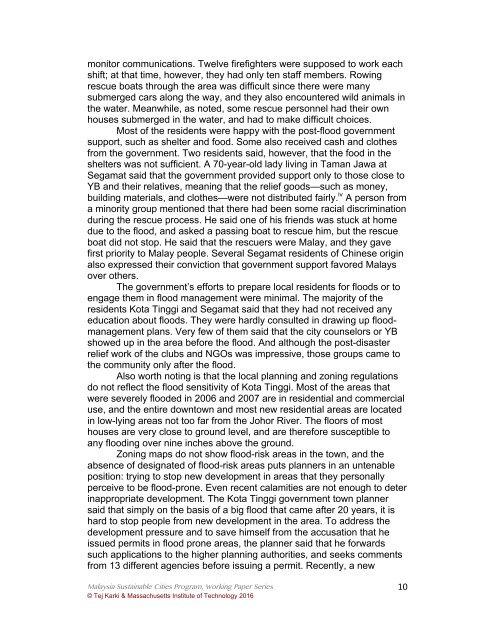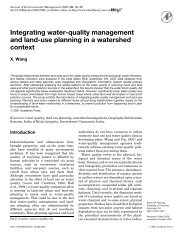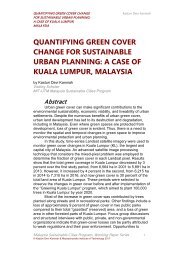Create successful ePaper yourself
Turn your PDF publications into a flip-book with our unique Google optimized e-Paper software.
monitor communications. Twelve firefighters were supposed to work each<br />
shift; at that time, however, they had only ten staff members. Rowing<br />
rescue boats through the area was difficult since there were many<br />
submerged cars along the way, and they also encountered wild animals in<br />
the water. Meanwhile, as noted, some rescue personnel had their own<br />
houses submerged in the water, and had to make difficult choices.<br />
Most of the residents were happy with the post-flood government<br />
support, such as shelter and food. Some also received cash and clothes<br />
from the government. Two residents said, however, that the food in the<br />
shelters was not sufficient. A 70-year-old lady living in Taman Jawa at<br />
Segamat said that the government provided support only to those close to<br />
YB and their relatives, meaning that the relief goods—such as money,<br />
building materials, and clothes—were not distributed fairly. iv A person from<br />
a minority group mentioned that there had been some racial discrimination<br />
during the rescue process. He said one of his friends was stuck at home<br />
due to the flood, and asked a passing boat to rescue him, but the rescue<br />
boat did not stop. He said that the rescuers were Malay, and they gave<br />
first priority to Malay people. Several Segamat residents of Chinese origin<br />
also expressed their conviction that government support favored Malays<br />
over others.<br />
The government’s efforts to prepare local residents for floods or to<br />
engage them in flood management were minimal. The majority of the<br />
residents Kota Tinggi and Segamat said that they had not received any<br />
education about floods. They were hardly consulted in drawing up floodmanagement<br />
plans. Very few of them said that the city counselors or YB<br />
showed up in the area before the flood. And although the post-disaster<br />
relief work of the clubs and NGOs was impressive, those groups came to<br />
the community only after the flood.<br />
Also worth noting is that the local planning and zoning regulations<br />
do not reflect the flood sensitivity of Kota Tinggi. Most of the areas that<br />
were severely flooded in 2006 and 2007 are in residential and commercial<br />
use, and the entire downtown and most new residential areas are located<br />
in low-lying areas not too far from the Johor River. The floors of most<br />
houses are very close to ground level, and are therefore susceptible to<br />
any flooding over nine inches above the ground.<br />
Zoning maps do not show flood-risk areas in the town, and the<br />
absence of designated of flood-risk areas puts planners in an untenable<br />
position: trying to stop new development in areas that they personally<br />
perceive to be flood-prone. Even recent calamities are not enough to deter<br />
inappropriate development. The Kota Tinggi government town planner<br />
said that simply on the basis of a big flood that came after 20 years, it is<br />
hard to stop people from new development in the area. To address the<br />
development pressure and to save himself from the accusation that he<br />
issued permits in flood prone areas, the planner said that he forwards<br />
such applications to the higher planning authorities, and seeks comments<br />
from 13 different agencies before issuing a permit. Recently, a new<br />
Malaysia Sustainable Cities Program, Working Paper Series<br />
© Tej <strong>Karki</strong> & Massachusetts Institute of Technology 2016<br />
10






